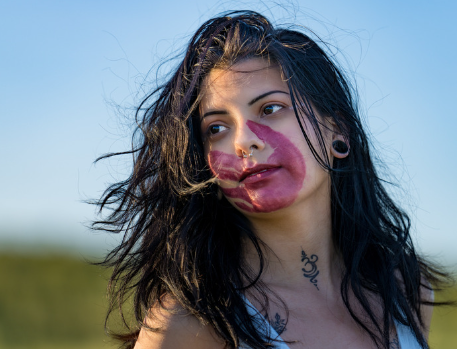To many, the term Missing and Murdered Indigenous Women (MMIW) is self-explanatory though unfamiliar. Its not the type of thing that pops up on most social media feeds, Tiktok shorts, or YouTube snippets. Yet those four words and their respective acronym represent a movement that has grown in importance and relevance with the passage of time.
According to data from the National Crime Information Center in 2020, there were 5,295 reported cases of missing American Indian and Alaskan Native women and girls. Additionally, a survey conducted by the Center for Disease Control (CDC) revealed that non-Hispanic American Indian and Alaska Native females experienced the second highest homicide rate that year. Homicide, was also in the top ten leading causes of death for non-Hispanic American Indian and Alaska Native females between the ages of 1-45.
Yet despite the numbers and ongoing crisis, MMIW continues to fly under the radar. The way indigenous suffering is often ignored is not a new issue. Instead, it is a problem that dates back hundreds of years, to the beginning of European colonization in the Americas.
The missing and murdered are only a portion of the issue. According to the MMIW Foundation sexual assault and violence against indigenous women is 10 times higher than the national average and 97% of this is perpetrated by non-indigenous people. Data from the CDC in 2020 also showed that two in five non-Hispanic American Indian and Alaskan natives were raped in their lifetime.
The Clarion spoke to Rochelle Red Bone Arebalo of MMIW-Indian Capital, a Facebook network raising awareness on the plight of indigenous victims and their families.
“Being part of the movement of the MMIW, the loved ones were silenced when they were murdered and are still missing. We that are here have a voice for those who cannot speak. This is a part of healing that generational trauma,” she said.
Data from a wide-range of official organizations show that indigenous women are the frequent targets of physical and sexual violence. Photo credit: Frank Minjarez, Pexels.com
Arebelo is hard at work solving one of the biggest challenges the movement faces: a lack of awareness among the general public.
“A lot of what I’ve noticed is not just in the media or native communities but nobody tends to care unless it happens to them or their family member. Our trauma from our ancestors and our upbringing have given us a different perspective of how we are supposed to feel, be, act or speak. Until this tragedy of missing or murdered comes to our doorways we stay silent. This work of the MMIW movement is very sensitive when we deal with families and victims,” Arebelo said.
Transgender women or Two-spirits as they are referred to in some indigenous cultures are also frequent targets of violence according to the Department of Justice (DOJ) in 2022. While steps have been taken at a federal level to address the continued issues facing indigenous communities, as the data shows, there remains much work to be done.
Those efforts include an executive order signed by President Joe Biden aimed designed to improve the safety and security of indigenous communities nationwide. A comprehensive plan was formulated by the DOJ and the Department of the Interior to bolster the response of law enforcement on Tribal lands.
As stated by the president during a 2021 proclamation recognizing May 5 as Missing and Murdered Indigenous Persons Awareness Day, “We must bridge the gap for families in crisis, provide necessary support services, and support opportunities for healing through holistic community-driven approaches.”
“For too long, there has been too much sorrow and worry. United by our mutual investment in healthy, safe communities, we will work together to achieve lasting progress,” he said.
Karen Shirk, Graphic Designer
Additional reporting by Ismael David Mujahid, Executive Editor
(Featured Image by Frank Minjarex, Pixels.com)


